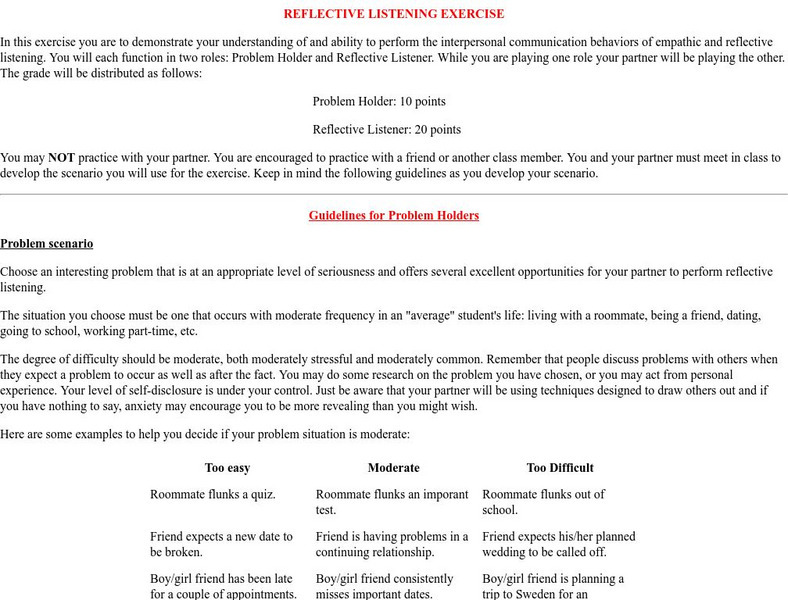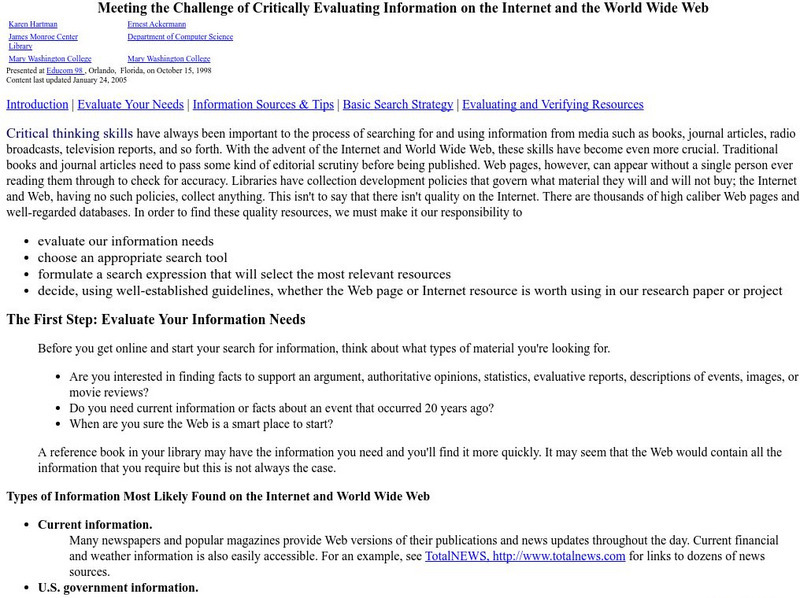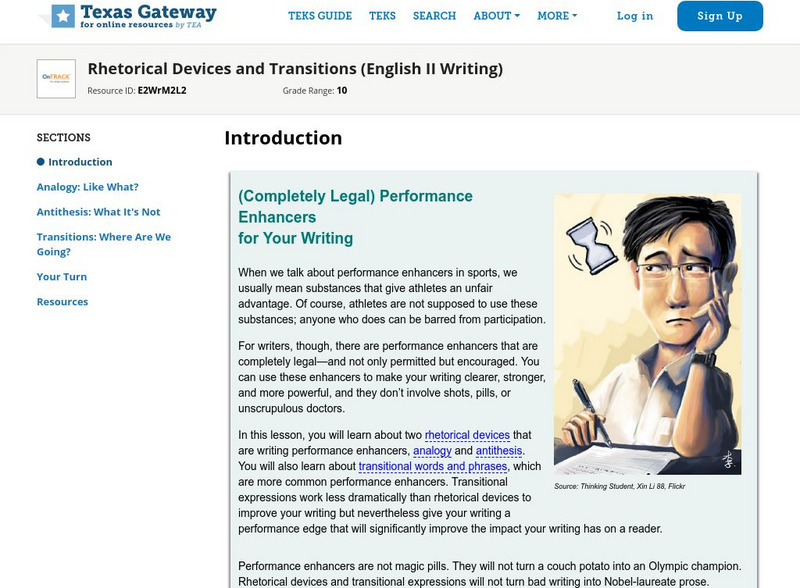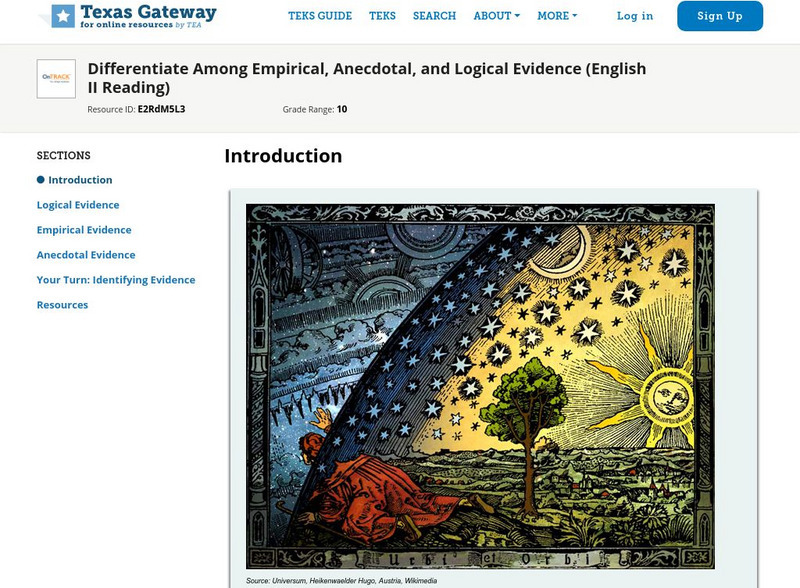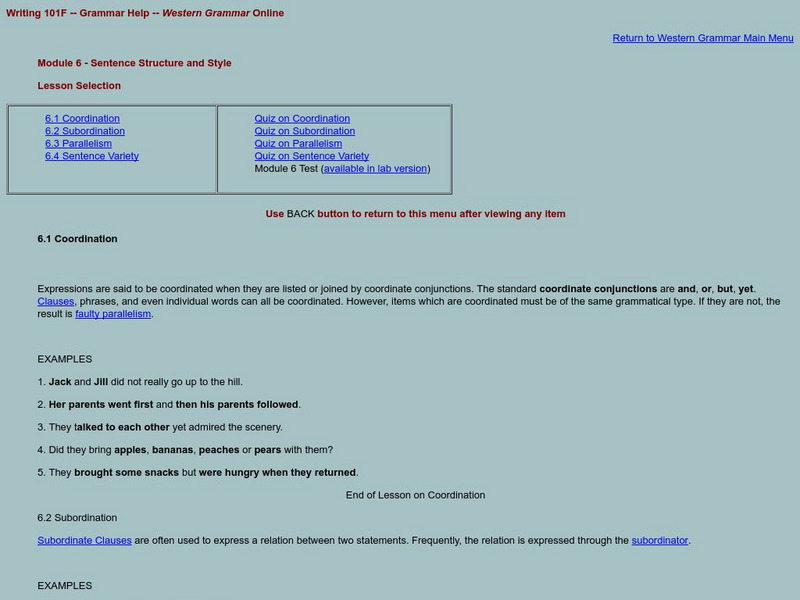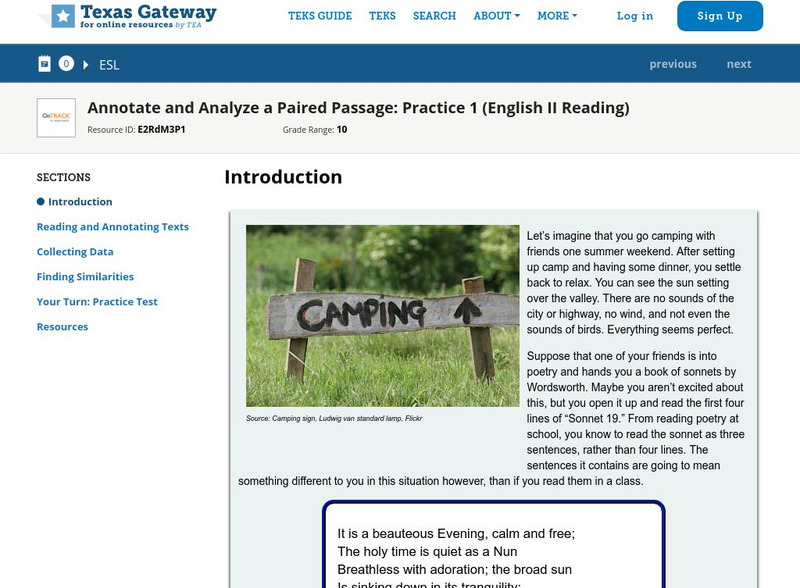Mind Tools
Introducation to Communication Skills
This article reveals the purpose of communication: to get your message across to others. This may seem elementary, but the process that involves both the sender of the message and the receiver is complex and can lead to confusion and...
TES Global
Blendspace: Effective Communication
A learning module with links to texts, images, and videos on how to communicate effectively.
Biz Move
Biz Move: Overcoming Communication Barriers How to Overcome Noise in Communication
Discusses communication barriers, particularly in the work environment, and examines how to overcome them. Barriers discussed include noise, faulty feedback, poor media selection, mental barriers, poor word selection, time and space...
Biz Move
Biz Move: Master Your Non Verbal Communication Skills
This article dicusses many aspects of nonverbal communication - eye contact, facial expressions, distance, paralanguage, and more. This is a very good introduction to the subject.
Other
Old Dominion University: Writing Sample Placement Test: Sample Essay
This is a sample writing placement test narrative essay and a list of questions students should ask themselves about their writing. CCSS.ELA-Literacy.CCRA.W.3
College Grad
Job Hunter: The Nonverbal Interview Technique
This article discusses the non-verbal communications skills that need to be mastered in order to succeed in an interview.
Sophia Learning
Sophia: Judging and Reacting: Tutorial
In this slideshow tutorial, students will review the critical reading techniques of making judgments and forming reactions about what they read. Explanations are given about drawing conclusions, responding to literature, and making...
Other
Critical Thinking: Basic Questions & Answers
An interesting interview with Richard Paul discussing what critical thinking means. There are many insights as to what critical thinking involves and how it should be used in the classroom.
Georgia Department of Education
Ga Virtual Learning: Informative Speech Critique Sheet (Pdf)
This PDF is a critique form for evaluating informative speeches. SL.9-10.3 Eval Presentation. CCSS.ELA-LiteracySL.3, SL.9-10.3 Eval Presentation
James Madison University
James Madison University: Reflective Listening Exercise
This exercise in reflective listening is designed to be done with a partner. Instructions are tailored to classroom use, complete with assessment sheets. There is also quite a bit of background material for those doing the exercise....
Other
How to Analyze a Speech
An interesting approach to how to analyze a speech. Presents a rhetorical pentangle as well as a rhetorical triangle, where each of the vertices represents an item to analyze. There is also an outline of the different areas to examine in...
Brown University
Brown University: Debates
Use this resource to learn how to engage in collaborative discourse and argumentation enhances student's conceptual understandings and refines their reasoning abilities. Be sure to click on the links to other resources.
Other
Inter Link: Achieving Effectiveness Through Team Communication
Article discusses how to achieve better team communication. Lists the components of team communication along with barriers to effective communication. Also provides a section on feedback. SL.9-10.1d Possitive Communication Stratagies,...
21st Century Schools
21st Century Schools: Critical Viewing Skills and Media Literacy
Understand media literacy as it relates to a student's ability to analyze, evaluate, critique and produce multiple media messages. Information and links to inspire students, teachers and all those who work with young people regarding...
Other
Webliminal: Critically Evaluating Information on the Internet
This site gives excellent information on why it's important to evaluate the content of everything you find in cyberspace, and also tells you how to do so. It also contains information about using search engines effectively and how to...
Other
Monash University: What Makes a Good Essay?
Read this example essay with its highlighted comments and labeled parts to get a good grasp of what an effective essay does. United States students should note that the documentation style is slightly different in this example. For more...
Sophia Learning
Sophia: Paper Writing: Introduction, Body, Conclusion
This site shows students how to write an introduction, body, and conclusion to create a complete paper. Students see examples of two different types of introductions, get ideas for attention grabbers, gain understanding of the type of...
Texas Education Agency
Texas Gateway: Rhetorical Devices and Transitions (English Ii Writing)
[Accessible by TX Educators. Free Registration/Login Required] Write an essay using effective rhetorical devices and transitions.
Texas Education Agency
Texas Gateway: Analyze Shifts in Perspective in Informational/persuasive Text
[Accessible by TX Educators. Free Registration/Login Required] Explain shifts in perspectives in the same argument and make decisions about support used in those arguments.
Texas Education Agency
Texas Gateway: Differentiate Among Empirical, Anecdotal, and Logical Evidence
[Accessible by TX Educators. Free Registration/Login Required] Distinguish among different kinds of evidence in a text that supports conclusions and arguments in texts.
Texas Education Agency
Texas Gateway: Analyze an Argument: Practice 1 (English Ii Reading)
Analyze the quality, relevance, and credibility of evidence that supports or opposes an argument.
Other
Instruct Uwo: Module 6 Sentence Structure and Style
This site discusses several characteristics of writing: coordination, subordination, parallelism, and sentence variety. Each section includes a brief discussion with examples. There are also quizzes and additional links for each section.
Texas Education Agency
Texas Gateway: Annotate and Analyze a Paired Passage: Practice 1
Read and annotate paired texts in order to make inferences, draw conclusions, and synthesize ideas and details using textual evidence.
Texas Education Agency
Texas Gateway: Diction and Tone (English Ii Reading)
Evaluate the role of diction and tone in literary nonfiction such as speeches, essays, and other forms.








